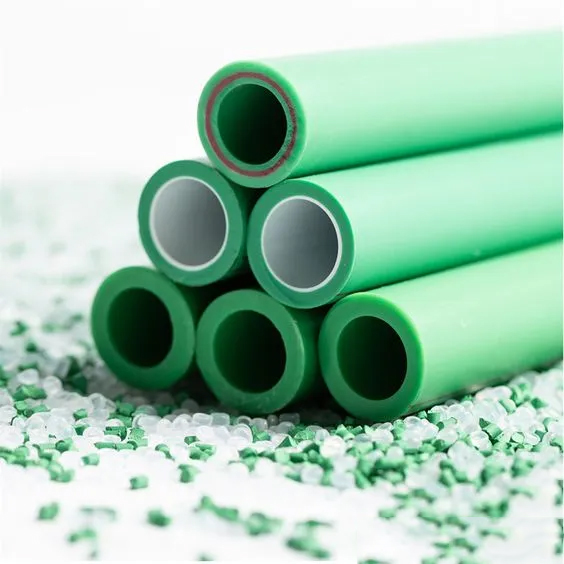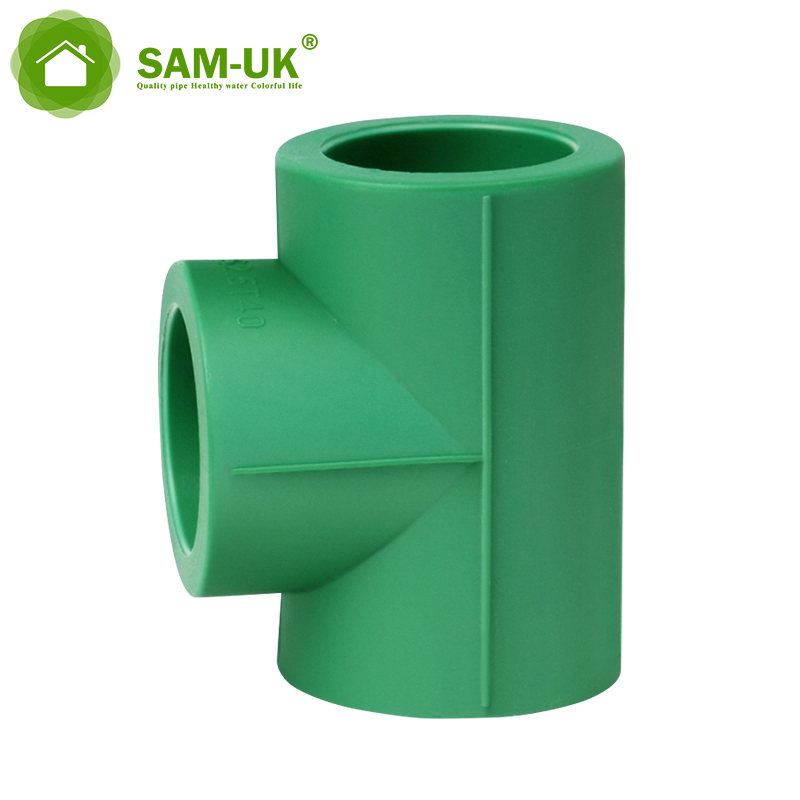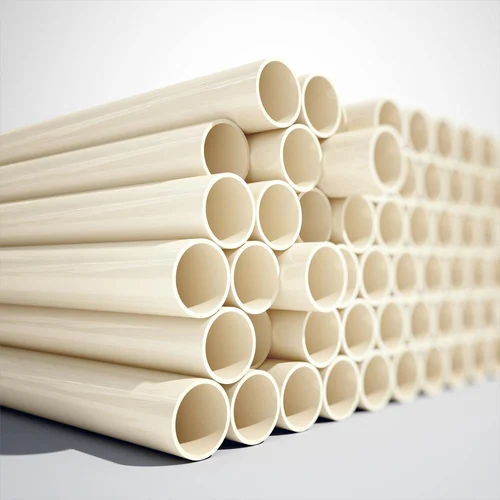Article Introduction
PPR and CPVC can be be used for the same purposes for the most part. PPR is slightly more resistant to chemicals. Usage is determined more by locality than anything else. CPVC is common in the U.S. simply because PPR wasn’t available when our residential systems largely converted to plastic over copper. So when you go down to the hardware store, you won’t be able to find PPR and it’s associated fusion fittings. However if you live in China, the opposite is true. Every hardware store has PPR and the fusion welding iron needed to install it.
Through the following article, you can understand the difference between PPR pipes and CPVC pipes !
Comparison of the differences between PPR and CPVC pipes
PPR PIPE FITTINGS:
PPR pipes are widely used in household and industrial piping systems due to their excellent properties, as their chemical properties and fusion welding ensure that the pipes have a perfect sealing system. It can be used as both cold water pipes and hot water pipes. Due to its non-toxic, light, pressure-resistant and corrosion-resistant characteristics, it is particularly suitable for drinking water transportation and hot water systems that require insulation. The following are the main characteristics of PPR pipes !
- Strong corrosion resistance: PPR pipes have excellent corrosion resistance, will not be corroded by chemicals such as acids and alkalis, and can operate stably for a long time.
- High temperature resistance: PPR pipes can withstand higher temperatures and can withstand high-temperature hot water in the hot water supply system without deformation or melting.
- Good thermal insulation performance: PPR pipes have good thermal insulation performance, which can reduce heat loss, improve the efficiency of the heating system, and save energy.
- Low noise: PPR pipes have good sound insulation effect, which can effectively reduce the noise generated when water flows through the pipes, providing a more comfortable living environment.
- Lightweight and high strength: The density of PPR pipes is only 1/8 of that of metal pipes, but the pressure test strength is as high as 5MPa, and it has good toughness and impact resistance.
- Long service life: Under appropriate working conditions, the service life of PPR pipes can reach more than 50 years.
- Easy to install: PPR pipes are connected by hot melt, which is easy and quick to install without the use of other auxiliary tools.

CPVC PIPE FITTINGS:
CPVC – CPVC is a thermoplastic made via chlorination of the polyvinyl chloride resin. It is resistant to degradation and provides a long service lifespan. In fact, the first piping systems using CPVC occurred in 1959, and they are still working without a problem.
- Corrosion resistance: CPVC pipes have excellent corrosion resistance and can resist erosion by various chemicals, ensuring long-term stable operation of the pipes when handling corrosive media. This makes CPVC pipes widely used in the chemical industry, and can safely and efficiently transport acids, alkalis, solvents and other corrosive chemicals.
- High temperature resistance: CPVC pipes can maintain stability in high temperature environments and are suitable for processes with high temperature treatment, such as chemical reactions and media transportation. Its excellent heat resistance can maintain no deformation and sufficient strength in environments above 93°C.
- Oxidation resistance: CPVC has strong oxidation resistance and is not easily affected by oxidation, which extends the service life of the pipe and reduces maintenance costs.
- Mechanical strength: CPVC pipes have good mechanical strength and can withstand certain pressures, making them suitable for high-pressure transportation systems in the chemical industry. Its tensile strength, bending strength and pressure bearing capacity are higher than other common plastic pipe materials.
- Environmental protection: The production process of CPVC pipes is relatively environmentally friendly, and the materials can be recycled and reused. Its long life and low maintenance cost help reduce resource waste and meet the chemical industry’s pursuit of sustainable development.
- Application areas: CPVC pipes are widely used in chemical transportation, high-temperature reactor pipes and chemical processing equipment. Due to its excellent corrosion resistance and high temperature resistance, CPVC pipes play an indispensable role in the chemical industry. In addition, CPVC pipes are also used in landscaping projects, tap water projects, electroplating plants, mines, drilling projects, highway projects and other fields.

Other differences
PPR Pipes are safe for humans as it does not contain chlorine derivatives while CPVC pipes has chlorine in its structure which can get separated and dissolve in the water in the form of vinyl chloride and accumulate in human body.
In several cases, leaching has been found in the case of CPVC pipes as their bond is weak which requires chemical solvent while PPR Pipes are joined together using heat fusion and prevents any type of leakage due to thicker pipe and stronger bonds. Several studies have been conducted in US with respect to leaching of hazards such as chloroform, tetrahydrofuran and acetate into drinking water through CPVC Pipes.

Selection suggestions
- Temperature resistance requirements: If high temperature resistance is required, CPVC is a better choice; if high temperature resistance hot water pipes are required, PPR is more suitable.
- Corrosion resistance: If corrosive media need to be transported, CPVC is more suitable; if general corrosion resistance is required, PPR can meet the needs.
- Application scenarios: CPVC is suitable for piping systems in industrial and special environments; PPR is suitable for household and commercial hot and cold water supply systems.

summarize
PPR is the most widely used plumbing piping system in Europe, Russia, South America, Africa, South Asia, China and Middle East while CPVC is used mainly in India and Mexico. PPR is superior to CPVC not because of wide acceptability but also it is safe for potable water. So The choice of CPVC and PPR material pipes mainly depends on the specific usage requirements and environment.
If you want to know more about pipes made of different materials, or have purchasing intentions, you can consult us (SAM-UK) at any time, and we will provide you with quality service !

About SAM-UK
SAM-UK are a professional 18+ years manufacturer in producing vinyl building profile products and PVC , CPVC , PPH , PPR , PP pipes and pipe fittings, valves, taps and so on. We own the certificates of SGS\SONCAP\ISO9001\CE\NSF,support color /size customization. Welcome to consult for Catalog and Product. you can contact us at email [email protected]





